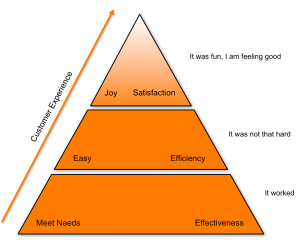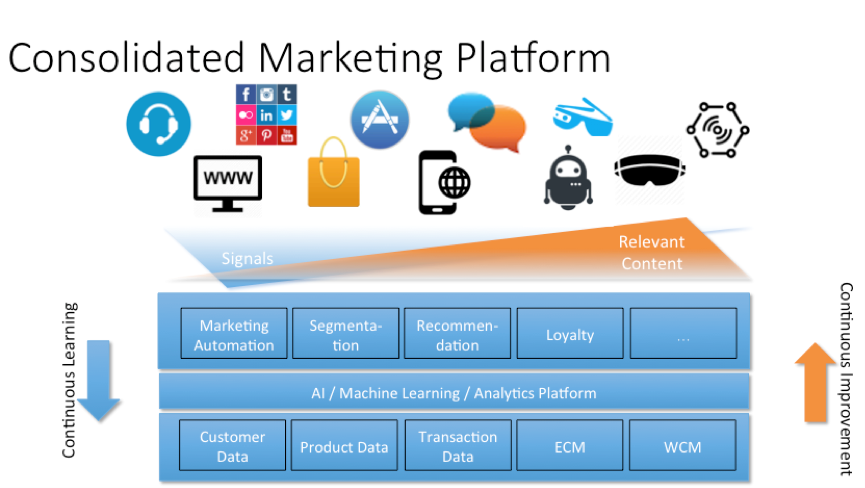The B2B salesperson is dead.
Or so it is said.
There are scores of studies telling us that most of a customer’s buying process is already accomplished before a salesperson is even contacted and is merely allowed to make the transaction.
Forrester Research predicted in 2015 that 1 million US salespeople would lose their jobs to self-service and ecommerce by 2020. While they updated this report in March 2017 the statement largely stays the same.
The highly reputed Edelman Trust Barometer reveals in 2017 that trust in businesses declines and that “CEO credibility decreased the most, dropping to an all-time low”. Instead, people trust a person like themselves, or technical and academic experts most.
And the trust in experts is declining, too.
The Environment Has Changed
Today, enabled by technology, especially mobile devices, and social media, customers have a far higher reach than they had, say, in the 90’s. Today they can get a wealth of information online, via sources they trust. And they reach out for it, especially when it comes to products of low complexity. Especially for these products they can’t be bothered contacting a sales person at all but simply buy online.
Customers simply go through the process in their own time and at their own pace.
On the other hand customers expect well-prepared advisors talking to them when it comes to complex products and solutions. This preparation needs to not only cover deep solution knowledge but also include knowledge about the specific circumstances the customer is in; the customer’s challenges, contexts, needs and, importantly, the persons. Sales people need to be able to show value immediately to gain and keep trust.
Last but not least, they need to be available via the communications channels of the customer’s choice.
Salespersons Are Unproductive
At the same time productivity of salespeople is suffering. Salespersons are spending considerable time doing administrative tasks, like reporting, administration, or simply filling data into the corporate CRM system. While these tasks are important, they take time away from what salespeople are doing best, and would like to do: Talking to people, selling great solutions.
However, even tasks that are directly related to sales keep them away from doing exactly that. Sorting and prioritizing leads, establishing a buying center, finding out who are the decision makers, the influencers for a deal. Identifying the right people to involve into a deal because of their expertise and relationship to key customer personnel. Or plain research for knowledge and trying to get hold of experts via the phone.
The list goes on and on.
Business Goes Digital – But Not Totally So
The root to the solution of above challenges lies in embracing both, the customer’s and the salesperson’s needs by implementing a hybrid online-offline strategy.
This strategy involves machine learning and AI at various places.
The Customer’s Needs

B2B Customers have become more discriminative. The more routine a purchase becomes the more the customer wants to complete it without the assistance of a salesperson. Customers can and want to manage those routine transactions online, via an ecommerce presence, or even through conversational tools. The key points are effectivity and efficiency. Customer needs must be met, and in an easy way.
Still the customer wants to have the possibility to easily get hold of a knowledgeable sales person, for example to get over some unexpected product complexities.
Both situations, and also the occasional cross- or upsell that clearly matches the customer’s intent, can get supported by advanced analytics-, or AI-driven components that present the right information at the right time and are able to create a qualified lead for or directly create contact with a knowledgeable salesperson.
The Salesperson’s Needs
On the salesperson side things are somewhat different. Salespersons need help in four areas.
1. Time freed up by removing administrative, non-productive tasks.
While this is also a process issue most suite vendors are offering interesting solutions here that start from automatic addition of appointments to a sales reps calendar to preparing visit reports based upon existing appointments and location.
2. Automated lead prioritization, so that they can concentrate on the most promising ones.
On an enterprise level all the big CRM vendors have solutions, be them Salesforce’s Sales Cloud Einstein, SAP’s Hybris Marketing with its intelligent lead scoring, or Microsoft’s Dynamic365 portfolio, or the classic InsideSales.
3. Automated identification of the social environment of their contacts.
This should include information about who in the own company can help best, also a functionality that more and more vendors offer, big and small. I personally like Nimble very much.
4. Collaboration tools that support seamless interaction with colleagues as well as customers.
While all big vendors have their solution here, be it Yammer, SAP Jam, MS Team, it is also worthwhile having a good look at Atlassian and Slack. Both of the latter can be easily integrated into existing solutions.
Some of these jobs overlap with the needs of the customer. For example the customer’s request for more information could show up as a task and calendar entry in the salesperson’s calendar. The enrichment of the contact profile, so that the salesperson is able to come forward with relevant information can be achieved by a smart relationship intelligence products.
What is true for the customer is true for the salesperson, too. The first priority is to help him becoming more effective, then more efficient. The same experience pyramid applies.
What it Takes
To give the B2B Salesperson a new lease of life both, the customer’s and the salesperson’s needs need to get addressed. In either case it takes smart automation to first address the basic needs and then the higher ones. One core step from here is to convert an existing eCommerce site into an iCommerce one. This immediately frees the salespersons from some tedious tasks while increasing customer satisfaction.
Add advanced analytics and learning models to not only create leads but also have them qualified. Enrich the hottest ones with relationship intelligence and add near-time appointments to the calendar of the most suitable salesperson, attaching documentation that is relevant for the customer’s intent. Supplement this by directly engaging the customer with relevant content on their channel of choice, as needed.

Take advantage of a strong, AI-enabled platform doing this.
But most importantly, free up the salespersons from tedious tasks. Visit reports can get created by the system based upon time and location, voice-to-text helps reducing time entering the data. The same holds true for phone conversations. The less data the salespersons need to manually enter the better they can do their job – and are resurrected by AI.



